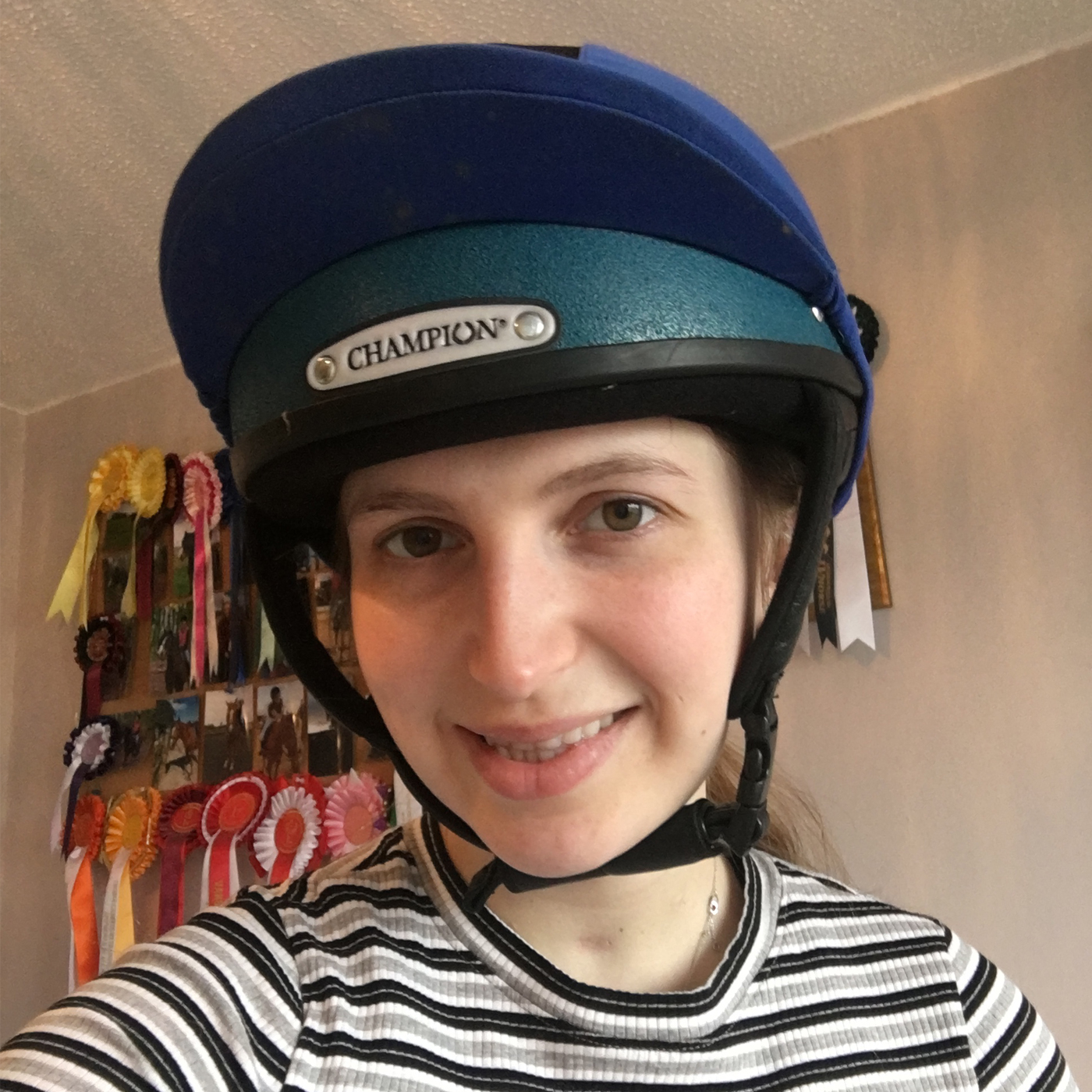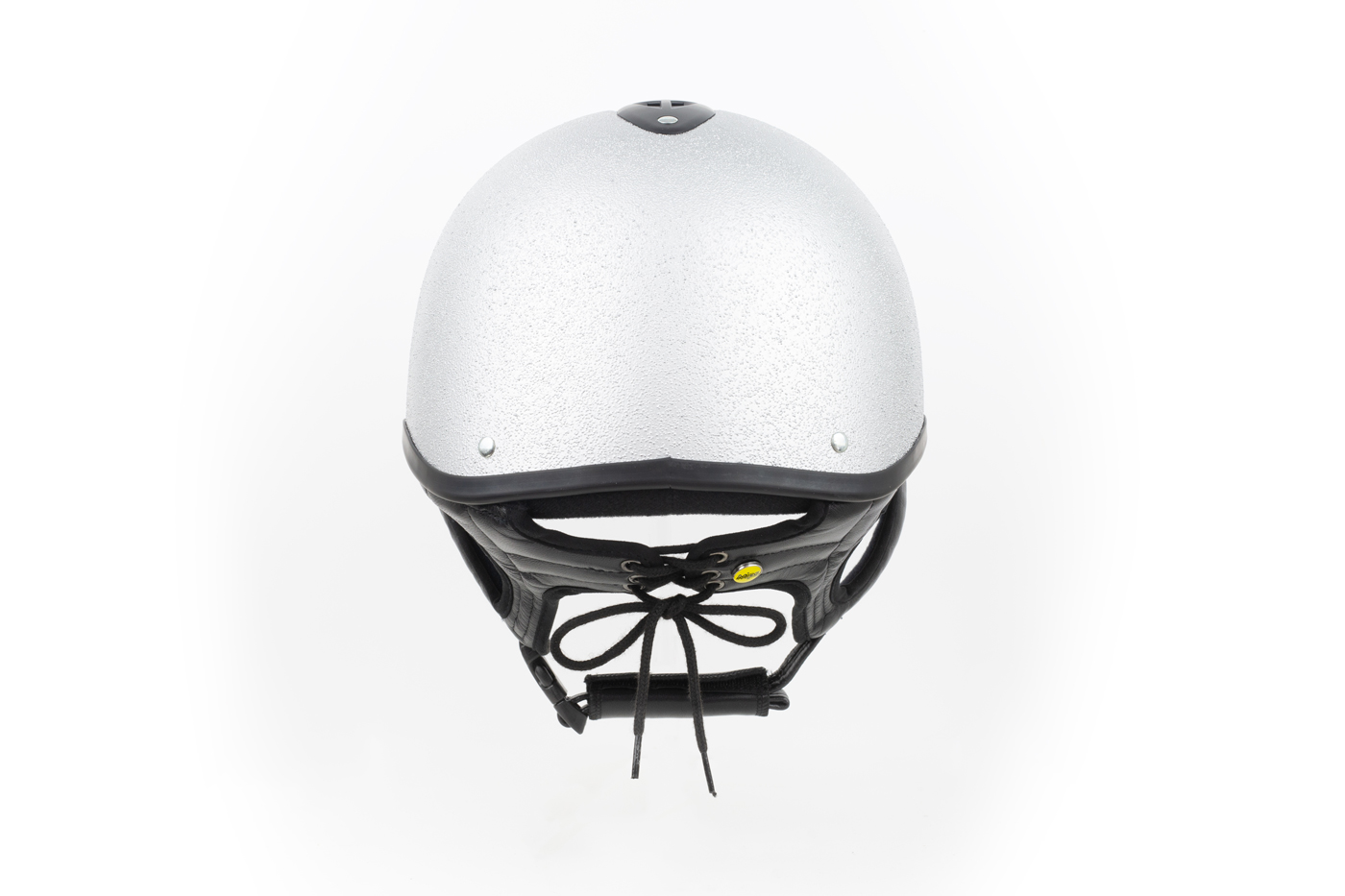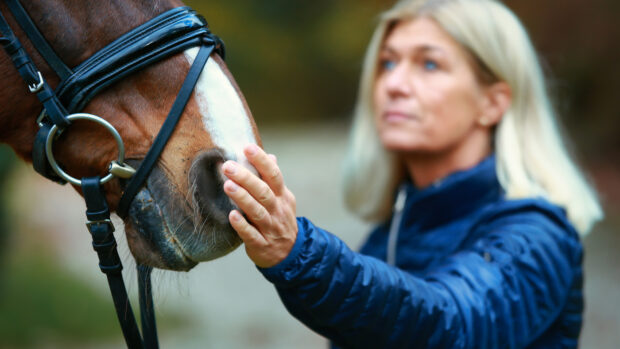Promotional Feature with Champion
Sarah Washington knows all too well how important it is to always wear a correctly fitted helmet when riding.
In June 2020, Sarah, now 23, suffered a traumatic brain injury in a fall while out hacking when her horse spooked and bolted. Sarah was knocked unconscious and rushed to hospital in an induced coma. A scan found severe bleeding and bruising on the brain, and she remained in intensive care for several weeks, and in hospital for six months.
She underwent a long rehabilitation to regain her speech, her balance and her ability to walk – as well as her memory. But if Sarah had not been wearing a correctly fitted hat when she had her accident, the outcome would likely have been a lot worse – her Champion helmet saved her life.

“Whatever horse you’re on and whatever you’re doing, you should wear a properly fitted helmet and make sure it’s done up. They’re animals with a mind of their own and anything could happen,” says Sarah, who uses the hashtag #helmetsarereplaceableheadsarenot on social media to help spread the message. “Make sure after any accident, especially if it involves any impact to your head, you change your helmet and get a new one.”
Champion production engineer Ben Hanna echoes this advice.
“The liner is the most important safety component of a helmet,” he says, explaining that the other key safety elements are the shell and the harness. “The liner is typically a piece of expanded polystyrene foam that sits inside the shell. It is designed to crush down under impact and prevent energy from transferring to the head and brain. But this foam is designed for a single impact – it only works once.”

Stringent standards
We’re all familiar with the various quality marks, such as the kitemark, and standards we see when it comes to riding helmets. But what do these actually mean – and which is best?
“In the UK there are two predominant standards,” explains Champion’s brand manager Helen Riley, who also sits on the European and BETA Standards Committees. “These are the VG1 and the PAS 015:2011. There are also the American standards SNELL2016 and ASTM F1163-15. Each prescribes exact test methods and criteria, and in the UK it is the PAS 015:2011 standard that has the most stringent requirements, more so than the VG1 and ASTM.”
All Champion helmets are manufactured to meet the PAS 015:2011 standard, and carry the relevant kitemark – showing that batch testing has taken place by the British Standards Institute (BSI).
“People know they can trust Champion – safety comes as standard with us,” Helen confirms.
Given Champion’s status as an innovator and market leader, and its commitment to safety, it is hardly surprising that its helmets undergo rigorous testing at Champion’s own in-house laboratory facility by its own engineers, like Ben.
Ben reveals that hats are impact tested using a metal headform, and dropped from a height of up to 2 meters onto a steel anvil, which varies in shape and is designed to mimic the sort of things a rider’s head may come into contact with.
“The helmets are also tested for crush, and loaded up with up to 1000 newtons of force – the equivalent of someone weighing 100kg standing on the helmet,” he adds.

The ultimate in safety
To ensure your hat will provide additional protection to the five already very stringent performance criteria, you’ll want a Mips helmet. Mips is a multi-directional impact protection system developed to help redirect the energy that causes the dangerous rotational motion of the brain typically experienced by riders when they have a fall.
Champion has partnered with Mips to offer the technology since 2019, and the Mips system is now available in 14 different styles of Champion helmet, easily identified by a yellow circular badge on the rear of the harness.
“Mips is a low friction layer located inside a helmet… that redirects the energy which is normally absorbed by your head [in a fall],” explains Max Strandwitz, CEO of Mips.
“At the point of impact, the Mips layer allows your head to continue to travel around 10-15mm, avoiding the head coming to a sudden stop, and preventing your head from absorbing the dangerous energies. We call that rotational motion and that is something that you want to avoid to make sure you don’t expose your brain to unnecessary angled impacts.”
As a trusted manufacturer of Mips helmets, Champion extensively tests and carries out accident reconstruction using state-of-the-art computer modelling to calculate the significant difference this technology can make in the event of a fall. Helen explains that as well as putting a great deal of work into refining testing methods, the brand is also at the very forefront of the work involved in getting rotational performance requirements written into helmet standards.

With such dedication to safety and research, and always with an eye on the future, it should come as no surprise that Champion is the favoured brand for a number of the world’s most successful riders, such as top eventers Pippa Funnell, Piggy March and Kitty King, and para dressage Olympic medallists Sophie Wells and Georgia Wilson.
Why not join them?
Listen to Episode 1 and Episode 2 of the Champion Safety series podcasts.




